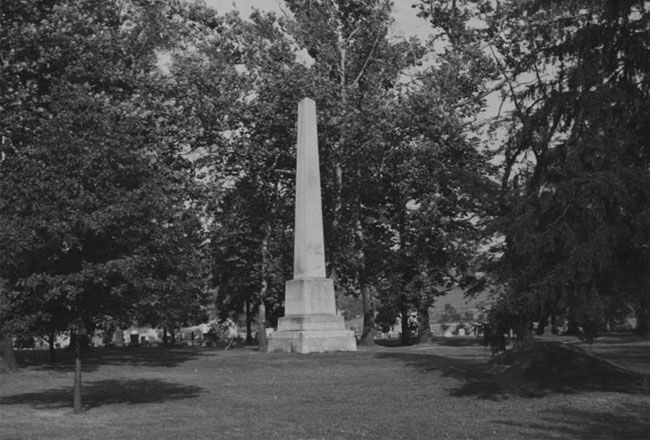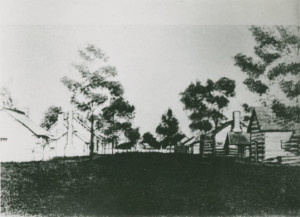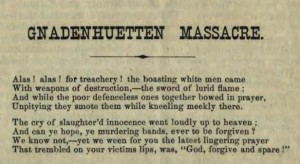“The Poor Defenseless Ones Together Bowed in Prayer”: The Gnadenhutten Massacre


Gnadenhutten, Ohio’s oldest existing European Settlement, was founded in October 1772 by the Moravian church. The village’s name is derived from the German “gnadenhütten” and means “huts of grace” or “tents of grace.” Its earliest residents were Christian missionaries, most notably David Zeisberger, and Delaware American Indians or as they called themselves “Lenni Lenape” who chose to convert to Christianity. Though the citizens of Gnadenhutten were pacifists, British forces engaged in fighting the Revolutionary War were skeptical of their loyalties and, to better control them, forcibly removed them and their neighbors in Schoenbrunn and Salem, sending them to “Captive Town” at the mouth of the Sandusky River in 1781. Having been forced to leave their home before they could harvest their crops, the group was left without provisions and many died of starvation and disease. In February 1782, a group of Delaware men, women and children were granted permission to return to Gnadenhutten to retrieve much-needed supplies. Accounts differ as to how many travelers were in this group, but anywhere from 100 to 150 Delaware made the trip.
At the same time, a different group of American Indians had recently raided and attacked white settlers in Pennsylvania. Pennsylvania militia set upon the Gnadenhutten group, accusing them of taking part in the Pennsylvania raid. Though the Gnadenhutten group Delaware denied any involvement, militia members held them captive and developed a plan to execute them the following day. The group was divided, with men in one building and women and children in a second. According to eye-witness accounts, the Delaware people sang and prayed throughout the night, knowing that they were to die the following day. The following day, each individual was marched into a room, again divided by sex, and was then bludgeoned with a hatchet and scalped. Ninety-six innocent Delaware were killed, with two boys escaping, one of whom had been left for dead.
In 1843, the Gnadenhutten Monument Society was formed in an effort to commemorate the event and erect a monument in the memory of the victims of the massacre; the monument was established at the centennial of Gnadenhutten’s founding in 1872. In the 20th century, a museum was created to interpret the town’s history and educate visitors on the massacre. The museum includes replica buildings and a mound that contains the victims’ remains. The site is now on the National Register of Historic Places.

In 1870, the Gnadenhutten Monument Society published A True History of the Massacre of Ninety-six Christian Indians, at Gnadenhuetten [sic], Ohio, which is based in part on the eye-witness account of the survivor of the massacre. Ohio Memory also holds a handful of items relating to Gnadenhutten and the massacre there, and Ohio History Central features a piece on the massacre, as well as links to related information.
Today, there are three Federally Recognized Delaware Tribes in the United States: Delaware Nation; Delaware Tribe of Indians; and the Stockbridge-Munsee Community.
After you’ve read the Society’s A True History and the article in Ohio History Central and have viewed the images of the massacre in Ohio Memory, consider visiting the site for yourself. Though they have been gone for more than two centuries, the victims of the Gnadenhutten massacre continued to be remembered by visitors to the monument and curious readers, like you! Thank you!
Thank you to Shannon Kupfer, Digital/Tangible Media Cataloger at theState Library of Ohio, for this week’s post!



Leave a Reply
You must be logged in to post a comment.